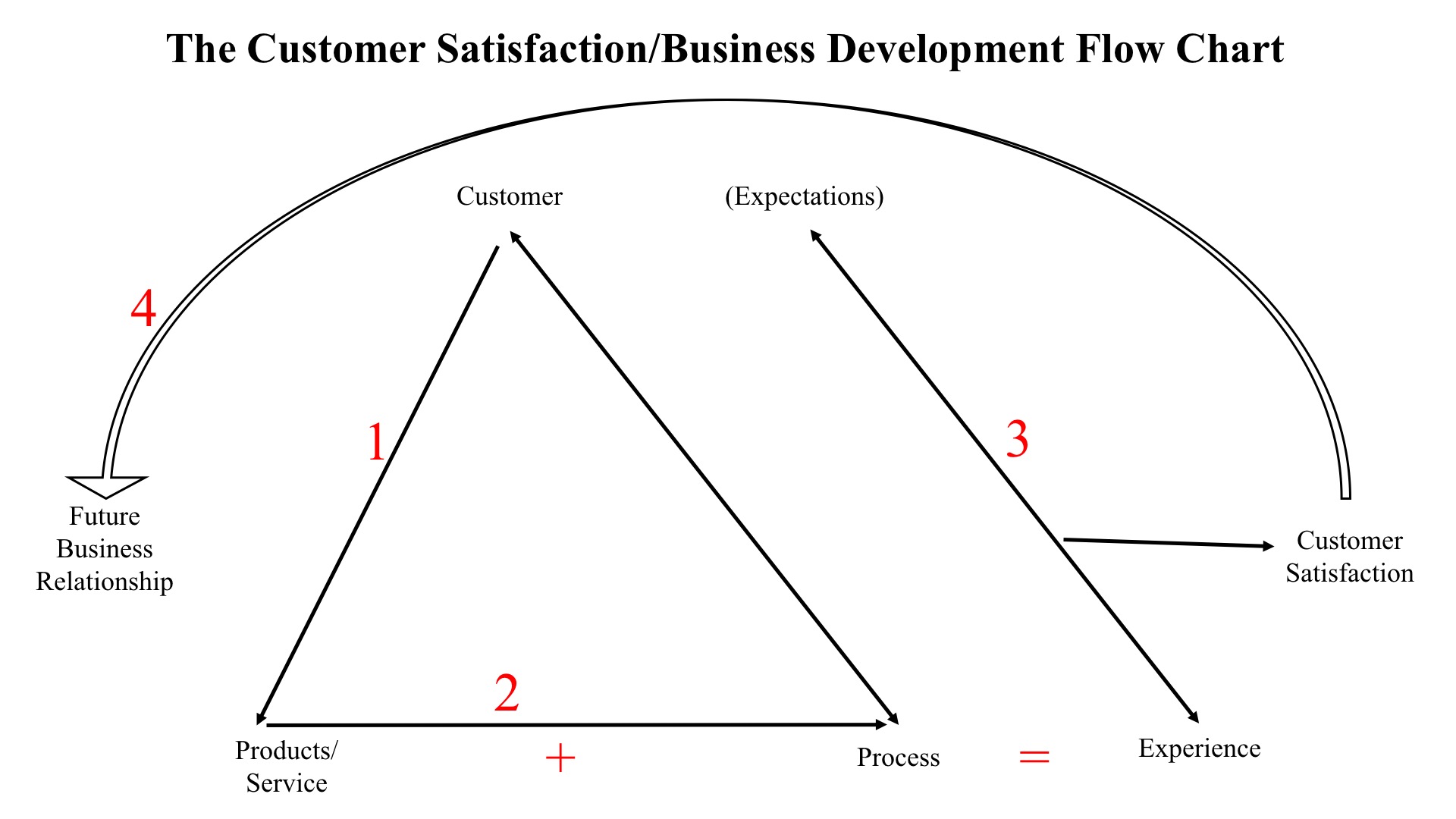Getting into the Business of Your Buyer's Success
Charles Fifield, MBA
 A basic objective to any selling engagement should be the buyer’s success, however that may be defined by the buyer. Regardless of the product/service offering, effective value-adding selling requires the salesperson or agent to connect with what the buyer wants and understand the buyer’s why. Without gaining that clear understanding, the seller spends a lot of wasted time largely feature dumping with disinterested prospects.
A basic objective to any selling engagement should be the buyer’s success, however that may be defined by the buyer. Regardless of the product/service offering, effective value-adding selling requires the salesperson or agent to connect with what the buyer wants and understand the buyer’s why. Without gaining that clear understanding, the seller spends a lot of wasted time largely feature dumping with disinterested prospects.
Getting Aligned to What the Buyers Want and Their Why
For the real estate professional, the very first step in the sales process is to understand who will be involved in the buying decision and how that buying center will make their decision. Once the decision-making process has been identified, defining the buyer’s concept of success and how it is to be measured is the next challenge for the sales professional.
Depending who makes up the buyer’s decision-making influencers and how the buying process was initiated, the agent may have to focus more on what is not said. The buying center (the buyer’s cast of characters in our purchase decision story), regardless of its composition or complexity, should naturally have some specific attributes or ideas about what it needs or wants and how it wants to process its decision. Getting properly aligned to both the buyer’s chosen decision process and the buyer’s key decision-making attributes is critical for achieving the end in mind, a win-win purchase decision.
The sales professional’s ability to successfully get aligned, and to help develop and guide the buyer’s decision-making experience will prove critical to success or failure. Another important factor to defining “success” is why the buyer wants it. In the end, the buying decision is largely emotions-based, and this means we need to understand how achieving success will benefit the buyer.
A key factor to developing a winning proposal is defining the buyer’s financial constraints or budget. To propose an offer that is unaffordable is by definition a waste because it adds no value to the buyer’s success story that you are in the process of shaping. In the end, the seller should not make a proposal for which the funding has not already been identified. Oftentimes, this takes significant time on the part of the seller to work with various financial influences on behalf of the buyer. Knowing the source of funds is also an important element in being able to later provide the buyer a reason to buy now.
Understanding and Measuring Their “Success”
It has been said that you can’t manage what you fail to effectively measure. Managing the buyer’s decision-making process in a diligent and creative manner toward achieving “success” is exactly what the seller should be attempting to execute. Therefore, knowing how the buyer measures “success” is a necessity. Early in the buyer-seller interaction, the seller must actively listen and probe to learn what the buyer is seeking as a measureable outcome because beginning with the end in mind and being in the business of fulfilling the buyer’s expected success is at the heart of effective and efficient interpersonal selling.
If the buyer is a business decision maker, making or saving more money is an obvious measure of “success.” Other common business measures of success include protecting throughput, reducing inventories, reducing operating expenses, reducing flow times and improving peace of mind. Business contractors often measure success in operating terms by being on specification, on budget and on time. For individual buyers, reducing risks (performance, process and personal) may be a measure of success.
Defining how the seller measures success essentially comprises what you intend to be the conclusion of the story that you are developing in co-authorship with the buyer. The buyer is the hero in your story, the theme is how you expect to benefit the buyer with your recommendation. The buying center members comprise the cast of characters, and the happy ending will be the buyer’s defined success fulfillment and satisfaction.
The Learning Conversation (TLC)
A valuable technique for understanding how the buyer defines “success” is the learning conversation, which is conducted in a consultative and structured manner. TLC suggests the planned sequential use of three types of questions – open-ended, closed-ended for clarification, and summary questions to confirm. For example, in the residential real estate business, a realtor could ask a prospective seller an open-ended question,
If you had the perfect realtor relationship in the sale of your home,
what would that look like? What would be the key characteristics of that working relationship?
After listening and further probing with closed-ended questions for clarification, you would summarize in question form to confirm your understanding, to nurture and to demonstrate what they just said is important to you. Then you could ask,
If you had this type of relationship with a realtor, what would be the key benefits to you?
It is the benefits to the customer that usually hold the emotion packed “success” key. Again, before moving further in the exchange as needed, summarize the benefits in an empathetic fashion.
Developing the Impact of a Less than Successful Current Status
In economics and decision theory, loss aversion refers to people’s tendency to prefer avoiding losses to acquiring equivalent gains. In other words, it’s better to not lose $5 than to find $5 of added value. Some studies have demonstrated that losses can be twice as powerful, psychologically, as gains. This general human tendency naturally leads to risk aversion when people are evaluating outcomes involving both gains and losses. Köszegi and Rabin’s (2006) work in experimental economics illustrates the role of expectations, suggesting an individual’s belief about the potential outcomes can create loss aversion, whether or not a tangible change of state has occurred (Köszegi and Rabin 2006). This loss aversion tendency can play a significant role in how the seller frames the purchase decision and its outcome to buying center members.
Demonstrating the More Productive Experience
Once the what and why of “success” are clearly understood and confirmed, the agent should present or demonstrate his/her capabilities in terms of solutions satisfying the buyer’s desired experience. In essence, this is the sales professional’s proposed means to achieving the buyer’s “success” or happy ending. One achieves a happy ending by selectively employing capabilities or features matching what the buyer wants. In other words, the sales professional is matchmaking and hereafter serving the role of an enabler or guide, i.e., enabling the buyer to achieve “success” via a demonstrated and validated value-adding new approach.
What Do We Really Sell?
Stanley Marcus, the retail sales guru and long-time CEO of Neiman-Marcus, once noted, “We want to sell customer satisfaction, not merchandise.” The acid test of successful personal selling is customer satisfaction. Farris, Bendle, Pfeifer, and Reibstein (2010) report that in a survey of nearly 200 senior marketing managers, 71% found a customer satisfaction metric very useful in managing and monitoring their businesses. The very essence of customer satisfaction is the perceived fulfillment of buyer expectations, which is inherently weighted by the success story the agent delivers through the buying experience.
The buying experience to be evaluated is comprised of two defining elements: (1) the products or services being offered -- more specifically their capabilities, and (2) the selling process, which includes the sales professional and his/her organization as they both make the offers and fulfill the orders. The experience is therefore a collection of deliverables that retrospectively answer the buyer’s questions, “What’s in it for me?” and “How do I feel about it?”
Not only is customer satisfaction a key short-term factor in the sales process, but it also creates significant value for the seller as it impacts a customer’s willingness to refer the agent to others. In fact, Farris, Bendle, Pfeifer, and Reibstein (2010) note that customer satisfaction ratings are powerful as they orient employees toward fulfilling customer expectations. Declines in customer satisfaction ratings can warn of impending declines in sales and profitability. The following chart illustrates how customer satisfaction plays an integral role in defining a business and developing its future.

Summary
One of the agent’s keys to success for effectively and efficiently managing a buyer’s purchase decision process is the ability to accurately and quickly discover what the buyer wants and why, and what financial constraints may be present. Since highly effective selling is long-term minded, such a selling approach is largely about earning customer satisfaction by offering a value-adding experience to buyers, getting properly aligned to what’s wanted and the why of a purchase decision is like a treasure hunt. A key method or means of locating the why involves active listening and the learning conversation.
. . . . . . . . . . . . . . . . . . .
References
Farris, Paul W., Neil T. Bendle, Phillip E. Pfeifer, and David J. Reibstein (2010), Marketing Metrics: The Definitive Guide to Measuring Marketing Performance, Pearson Press.
Köszegi, Botond and Matthew Rabin (2006), “A Model of Reference-Dependent Preferences,” The Quarterly Journal of Economics, 121 (4), 1133-65.
. . . . . . . . . . . . . . . . . . .
About the Author
Charles Fifield, MBA
Senior Lecturer and Sales Coach, Baylor University’s Center for Professional Selling
Chuck Fifield is a Senior Lecturer for Baylor University’s Hankamer School of Business, Marketing Department and serves as the faculty coach to several Baylor Sales teams. He joined the faculty at Baylor University in 2001, teaching in the Graduate Business School (Operations Management), the Management Department (Negotiations and Conflict Resolution) and the Economics Department (Principles of Macroeconomics). Chuck has taught or guest lectured at other Texas-based Universities in the fields of sales, international business, money and banking and finance/investments. Professor Fifield has conducted sales research and training for several organizations, including most recently State Farm Insurance. Prior to joining Baylor, Chuck was a financial consultant for nearly thirty years to businesses located throughout the U.S. He owned and operated several financial service businesses in the fields of securities, real estate, oil and gas and insurance.